Ditapis dengan
E-Book Solidarity – Nature, grounds, and value
In a world of deep political divisions and rising inequality, people feel the need for some form of collective resistance and transformative joint action. Calls for solidarity are heard everywhere. This book presents a critical proposal to guide our reflection on what solidarity is and why it matters. How is solidarity distinct from related ideas such as altruism, justice and fellow-feeling? Wh…
- Edisi
- -
- ISBN/ISSN
- 9781526172693
- Deskripsi Fisik
- 295 halaman
- Judul Seri
- -
- No. Panggil
- 300.1 SAN s
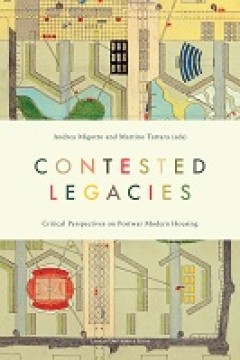
E-Book Contested Legacies: Critical Perspectives on Postwar Modern Housing
New insights on the controversial and often-overlooked postwar large-scale housing estates. In the light of the current housing and environmental crisis and increasing social inequalities, there is a growing sense of urgency for architecture as a discipline to engage with the transformation in housing evident in the postwar period. Rather than conceiving this task as a technical matter, this bo…
- Edisi
- -
- ISBN/ISSN
- 9789461665157
- Deskripsi Fisik
- 233 halaman
- Judul Seri
- -
- No. Panggil
- 363.5 MIG c
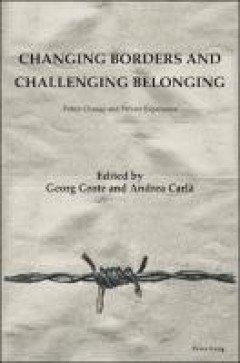
E-Book Changing Borders and Challenging Belonging
This timely and important book provides a critical look at borders and belonging. It illuminates the tensions and contradictions that often exist within the logic of legal and political mechanisms that define regional and national boundaries and the reality of the lives lived within these constructions. The resulting essays are instructive, thought-provoking and sometimes very moving exploratio…
- Edisi
- -
- ISBN/ISSN
- 9781800796652
- Deskripsi Fisik
- 290 halaman
- Judul Seri
- -
- No. Panggil
- 320.12 GRO t
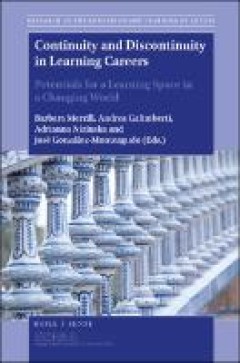
E-Book Continuity and Discontinuity in Learning Careers: Potentials for a Lea…
Continuity and Discontinuity in Learning Careers: Potentials for a Learning Space in a Changing World focuses on the continuities and discontinuities of the learning careers and identities of non-traditional adult students in diverse learning contexts. Readership: All those interested in adult education and the challenges facing adult education today such as researchers in education and social …
- Edisi
- -
- ISBN/ISSN
- 9789004375475
- Deskripsi Fisik
- 214 halaman
- Judul Seri
- -
- No. Panggil
- 374 MER c
E-book Ancient Herbs : In the J. Paul Getty Museum Gardens
Herbs in antiquity touch on so many aspects of human activity that the advice of classicists, botanists, horticulturalists, linguists, medical historians, physicians, and sociologists has been essential. The first Getty Museum publication on the subject was The Herb in Antiquity written in 1976 by Deborah Ashin in response to the interest of visitors. My great appreciation and gratitude go to J…
- Edisi
- -
- ISBN/ISSN
- 0892360356
- Deskripsi Fisik
- 99 hlm
- Judul Seri
- -
- No. Panggil
- 635.7 DAN a
E-book Disturbing Times : Medieval Pasts, Reimagined Futures
These are disturbing times. Scholars in medieval and premod-ern studies are tired of explaining why, yet this labor continues to be performed by those who often have the least personal and professional security.1 A case in point here is Mary Rambaran-Olm, who consistently advocated, and with considerable risk for her own scholarly career and personal well-being, for the re-tire…
- Edisi
- -
- ISBN/ISSN
- 9781950192762
- Deskripsi Fisik
- 385 hlm
- Judul Seri
- -
- No. Panggil
- 935 KAR d
E-book Forest Entomology and Pathology : Volume 1: Entomology
Insects and closely related arthropods are the dominant and most diverse forms of terrestrial and aquatic (non-marine) animal life on the planet. Other than marine systems, insects occupy every conceivable environment and habitat on the Earth. Crustaceans and Annelids (worms) are the dominant and most diverse groups of animals in marine systems. T…
- Edisi
- -
- ISBN/ISSN
- 9783031115530
- Deskripsi Fisik
- 810 hlm
- Judul Seri
- -
- No. Panggil
- 634.9 ALL f
E-book An introduction to friendliness (mettā) : Emotional intelligence and …
This introduction explores friendliness by moving through seven main topics. The first two topics (recollection of the body and working with the hin-drances) provide the foundations and could in themselves be considered as an autonomous and complete practice. In fact, anything else will just be a deepening of what is already entailed by them. They should be fairly acces-sible, although they wil…
- Edisi
- -
- ISBN/ISSN
- 9789403429410
- Deskripsi Fisik
- 382 hlm
- Judul Seri
- -
- No. Panggil
- 181.043 SAN a
E-book Cultural Perspectives on Aging
Demographic transformation resulting from low fertility and high life expectancyin developedand developing countries has led to an increase in the numbers of elderly people living in those countries. Moreover,low birthrates,changing fam-ilystructures,and economic and political crises causing migration and flight arehavinga significant impact on intergenerational relationships,social welfare sys…
- Edisi
- -
- ISBN/ISSN
- 9783110683042
- Deskripsi Fisik
- 179 hlm
- Judul Seri
- -
- No. Panggil
- 305.2 BAR c
E-book The Century of Global Cities : How Urbanisation is Changing the World …
Think tanks and research centres worldwide are devoting in-creasing attention to the growing role of global cities. Why do global cities matter? And why should a think tank dealing with international affairs such as ISPI look at the evolving role of global cities? The obvious answer is: because cities do matter. Urban settings cover barely 2% of the Earth’s surfac…
- Edisi
- -
- ISBN/ISSN
- 9788855260916
- Deskripsi Fisik
- 151 hlm
- Judul Seri
- -
- No. Panggil
- 338.9 IWA t
E-book From efficiency to reduction : Tackling energy consumption in a cross …
In 2018, CO2 emissions from fossil-based energy sources have reached another historical record, of about 37.1 tonnes of CO2 a year, with an even worse prognosis for 2019. After a small stabi-lizing period between 2015 and 2016, CO2 in the air has just been increasing approximately 1% each year despite that the share of renewable energies has been increasing worldwide. These figures outline the …
- Edisi
- -
- ISBN/ISSN
- -
- Deskripsi Fisik
- 183 hlm
- Judul Seri
- -
- No. Panggil
- 531.6 BOZ f
E-Book Edensor
Aku ingin mendaki puncak tantangan, menerjang batu granit kesulitan, menggoda mara bahaya, dan memecahkan misteri dengan sains. Aku ingin menghirup berupa-rupa pengalaman lalu terjun bebas menyelami labirin lika-liku hidup yang ujungnya tak dapat disangka. Aku mendamba kehidupan dengan kemungkinan-kemungkinan yang bereaksi satu sama lain seperti benturan molekul uranium: meletup tak terduga-dug…
- Edisi
- Cet. 5
- ISBN/ISSN
- 9789791227025
- Deskripsi Fisik
- xii, 290 hlm; 3 MB
- Judul Seri
- Buku ketiga dari tetralogi Laskar Pelangi
- No. Panggil
- 899.2213 AND e
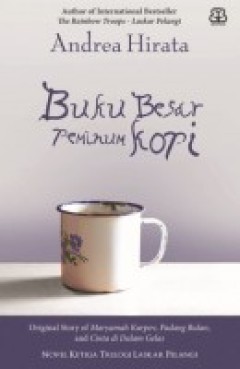
Buku besar peminum kopi
Ada tugas berat di pundak Ikal. Dia harus membantu Maryamah memenangkan pertandingan catur saat 17 Agustus nanti. Maryamah, yang menyentuh bidak catur saja belum pernah, harus mengalahkan juara catur selama dua tahun berturut-turut yang sekaligus juga mantan suaminya. Namun, lebih dari itu, jenis kelamin Maryamah menjadi tantangan berat untuk bisa mencebur ke dalam pertandingan penuh harkat bag…
- Edisi
- cet. 1
- ISBN/ISSN
- 9786022916642
- Deskripsi Fisik
- 350 hlm. 13 x 20 cm
- Judul Seri
- -
- No. Panggil
- 899.221 HIR b
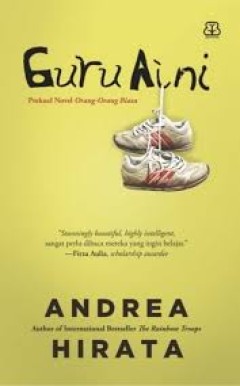
Guru Aini : Prekuel novel orang-orang biasa
Perjalanan seorang anak revolusi yang pulang kampung karena ayahandanya jatuh sakit. Dari seputaran perjalanan itu, terungkap beberapa potong puing gejolak hati yang teka pernah teranggap dalam gebyar-gebyar revolusi. Dikisahkan bagaimana keperwiraan seseorang dalam revolusi pada akhirnya melunak ketika dihadapkan pada kenyataan sehari-hari: ia menemukan ayahnya yang seorang guru yang penuh …
- Edisi
- cet. 1
- ISBN/ISSN
- 9786022916864
- Deskripsi Fisik
- 336 hlm. 13 x 20,5 cm
- Judul Seri
- -
- No. Panggil
- 899.221 HIR g
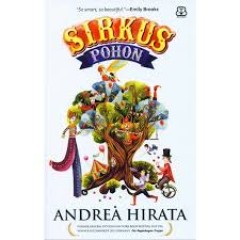
Sirkus pohon
Sirkus Pohon adalah novel karangan Andrea Hirata. Setelah hampir 3 tahun tak terdengar kabarnya, Andrea Hirata kembali membawa sebuah novel berjudul Sirkus Pohon. Novel ini menceritakan tentang pohon Delima. Mengapa pohon Delima? Ternyata ada filosofi di dalamnya. Pohon Delima itu terkadang musuh, terkadang pembawa kenangan, terkadang pula pembawa cinta. Andrea Hirata berhasil mengemas itu semu…
- Edisi
- cet. 6
- ISBN/ISSN
- 9786022974099
- Deskripsi Fisik
- 383 hlm.; Illus. 13 x 20,5 cm
- Judul Seri
- -
- No. Panggil
- 899.221 HIR s
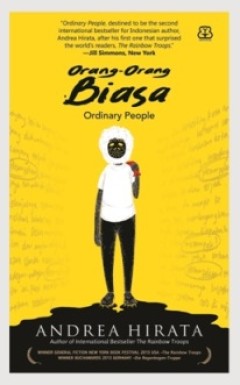
orang-orang biasa
Pencurian malam hari: 2 Pencurian siang hari: 3 Pencurian sendiri: 1 Pencurian bersama-sama: 1 Pencurian dengan pemberatan: 0 Pencurian kendaraan bermotor: 1 Sebatang kapur dan penghapus tergeletak di bawah papan tulis itu. Tampak benar telah sangat lama tak dipakai. Demikian minim angka-angka itu sehingga tak bisa dijadikan diagram batang, diagram kue cucur atau diagram naik-naik ke pu…
- Edisi
- cet. 1
- ISBN/ISSN
- 9786022975249
- Deskripsi Fisik
- xii + 300 hlm. 13 x 20,5 cm
- Judul Seri
- -
- No. Panggil
- 899.221 HIR o
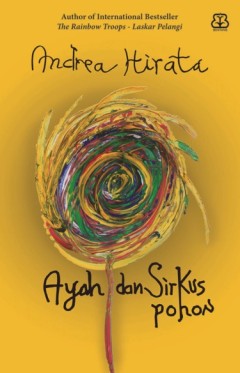
Ayah dan sirkus pohon
Betapa Sabari menyayangi Zorro. Ingin dia memeluknya sepanjang waktu. Dia terpesona melihat makhluk kecil yang sangat indah dan seluruh kebaikan yang terpancar darinya. Diciuminya anak itu dari kepala sampai ke jari-jemari kakinya yang mungil. Kalau malam Sabari susah susah tidur lantaran membayangkan bermacam rencana yang akan dia lalui dengan anaknya jika besar nanti. Dia ingin mengajaknya me…
- Edisi
- cet. 1
- ISBN/ISSN
- 9786022916611
- Deskripsi Fisik
- viii + 194 hlm. 13 x 20 cm
- Judul Seri
- -
- No. Panggil
- 899.221 HIR a
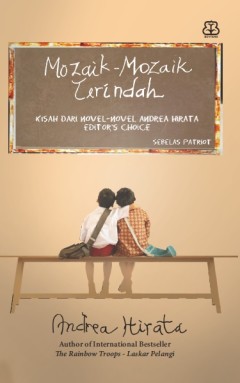
Mozaik-mozaik terindah : Kisah dari novel-novel Andrea Hirata editor's choices
Mozaik-Mozaik Terindah merupakan kumpulan bab-bab pilihan editor yang diambil dari buku-buku Andrea Hirata. Di dalamnya kita akan menemukan semangat, perjuangan, cinta, harapan, dan tak kalah pentingnya adalah makna sahabat.
- Edisi
- cet. 1
- ISBN/ISSN
- 9786022916659
- Deskripsi Fisik
- vii + 154 hlm.; illus. 13 x 20,5 cm
- Judul Seri
- -
- No. Panggil
- 899.221 HIR m
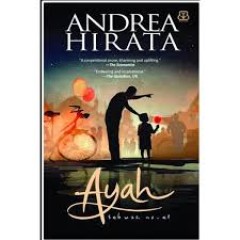
Ayah
Seorang lelaki bernama Sabari tak henti-hentinya berusaha untuk mengejar perempuan bernama Marlena. Meski ditolak Marlena berkali-kali ia tak gentar dan tetap mencari cara untuk mendapatkan pujaan hatinya. Dibantu Ukun, Tamat, Toharun, serta sahabat lainnya, Sabari konsisten untuk mencuri hati Marlena. Sementara di belahan bumi lain, seorang anak bernama Amiru begitu mengagumi ayahnya yg amat m…
- Edisi
- cet. 24
- ISBN/ISSN
- 9786022911029
- Deskripsi Fisik
- 396 hlm. 13 x 20,5 cm
- Judul Seri
- -
- No. Panggil
- 899.221 HIR a

Guru Aini : Prekuel novel orang-orang biasa
Ini persamaan hidupku sekarang, Bu, Desi menyodorkan buku catatan ke tengah meja. Bu Amanah, yang juga guru matematika, tersenyum getir melihat persamaan garis lurus dengan variabel-variabel yang didefinisikan sendiri oleh Desi, x1: pendidikan, x2: kecerdasan. Yang menarik perhatiannya adalah konstanta a: pengorbanan. Pendidikan memerlukan pengorbanan, Bu. Pengorbanan itu nilai tetap, konstan,…
- Edisi
- cet. 1
- ISBN/ISSN
- 9786022916864
- Deskripsi Fisik
- 336 hlm. 13 x 20,5 cm
- Judul Seri
- -
- No. Panggil
- 899.221 HIR g

The Book of art - How to look at art : A pictorial encyclopedia of painting, …
Quality set Printed in Italy, this set features gold leaf page edges, good paper, and lush illustrations. Front cover quote "The Book of Art Set is designed as an intro to the visual arts: painting, drawing, and sculpture. It provides a comprehensive survey, in 10 volumes of one of the most creative aspects of human effort, especially organized for the reader who does not have an extensive know…
- Edisi
- 4th edition
- ISBN/ISSN
- -
- Deskripsi Fisik
- 254 pg.; illus. 21 x 25 cm
- Judul Seri
- -
- No. Panggil
- 703 MYE t
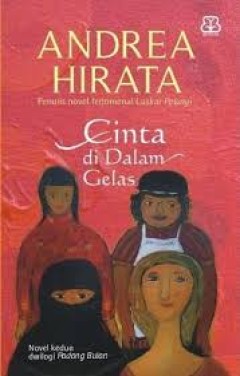
Cinta di dalam gelas
Sebagai kelanjutan kisah Enong di novel Padang Bulan, novel Cinta di Dalam Gelas menceritakan perjalanan nasib Enong. Ia kemudian berurusan dengan seorang preman pasar pagi, seorang lelaki yang bercita-cita menjadi teknisi antena parabola, dan seorang grand master perempuan tingkat duni ayang berasal dari Georgia. Bagaimana pula presiden perempuan Republik Indonesia, Kapten CHIP, dan dua ekor b…
- Edisi
- cet. 11
- ISBN/ISSN
- 9786028811316
- Deskripsi Fisik
- 316 hlm. 13 x 20,5 cm
- Judul Seri
- -
- No. Panggil
- 899.221 HIR c

Sirkus pohon
Sirkus Pohon adalah novel karangan Andrea Hirata. Setelah hampir 3 tahun tak terdengar kabarnya, Andrea Hirata kembali membawa sebuah novel berjudul Sirkus Pohon. Novel ini menceritakan tentang pohon Delima. Mengapa pohon Delima? Ternyata ada filosofi di dalamnya. Pohon Delima itu terkadang musuh, terkadang pembawa kenangan, terkadang pula pembawa cinta. Andrea Hirata berhasil mengemas itu semu…
- Edisi
- cet. 3
- ISBN/ISSN
- 9786022914099
- Deskripsi Fisik
- 383 hlm. 13 x 20,5 cm
- Judul Seri
- -
- No. Panggil
- 899.221 HIR s
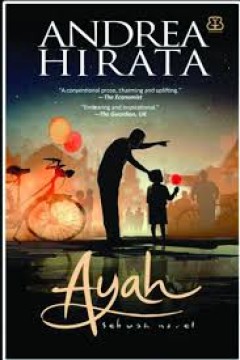
Ayah
Seorang lelaki bernama Sabari tak henti-hentinya berusaha untuk mengejar perempuan bernama Marlena. Meski ditolak Marlena berkali-kali ia tak gentar dan tetap mencari cara untuk mendapatkan pujaan hatinya. Dibantu Ukun, Tamat, Toharun, serta sahabat lainnya, Sabari konsisten untuk mencuri hati Marlena. Sementara di belahan bumi lain, seorang anak bernama Amiru begitu mengagumi ayahnya yg amat m…
- Edisi
- cet. 6
- ISBN/ISSN
- 978-602-291-102-9
- Deskripsi Fisik
- 398 hlm. 13 x 20,5 cm
- Judul Seri
- -
- No. Panggil
- 8X0 HIR a

PADANG BULAN DAN CINTA DI DALAM GELAS: Novel pertama dwilogi Padang Bulan
- Edisi
- cet. 3
- ISBN/ISSN
- 978-602-8811-09
- Deskripsi Fisik
- xvi, 253 hlm.;13 x 20,5 cm
- Judul Seri
- -
- No. Panggil
- 8X0 HIR p
- Edisi
- cet. 3
- ISBN/ISSN
- 978-602-8811-09
- Deskripsi Fisik
- xvi, 253 hlm.;13 x 20,5 cm
- Judul Seri
- -
- No. Panggil
- 8X0 HIR p

LASKAR PELANGI:
- Edisi
- cet. 12
- ISBN/ISSN
- 979-3062-79-7
- Deskripsi Fisik
- xviii, 534 hlm.;13 x 20,5 cm
- Judul Seri
- -
- No. Panggil
- 8X0 HIR l
- Edisi
- cet. 12
- ISBN/ISSN
- 979-3062-79-7
- Deskripsi Fisik
- xviii, 534 hlm.;13 x 20,5 cm
- Judul Seri
- -
- No. Panggil
- 8X0 HIR l

LASKAR PELANGI:
- Edisi
- cet. 12
- ISBN/ISSN
- 979-3062-79-7
- Deskripsi Fisik
- xviii, 534 hlm.;13 x 20,5 cm
- Judul Seri
- -
- No. Panggil
- 8X0 HIR l
- Edisi
- cet. 12
- ISBN/ISSN
- 979-3062-79-7
- Deskripsi Fisik
- xviii, 534 hlm.;13 x 20,5 cm
- Judul Seri
- -
- No. Panggil
- 8X0 HIR l

LASKAR PELANGI:
- Edisi
- cet. 12
- ISBN/ISSN
- 979-3062-79-7
- Deskripsi Fisik
- xviii, 534 hlm.;13 x 20,5 cm
- Judul Seri
- -
- No. Panggil
- 8X0 HIR l
- Edisi
- cet. 12
- ISBN/ISSN
- 979-3062-79-7
- Deskripsi Fisik
- xviii, 534 hlm.;13 x 20,5 cm
- Judul Seri
- -
- No. Panggil
- 8X0 HIR l

LASKAR PELANGI:
- Edisi
- cet. 12
- ISBN/ISSN
- 979-3062-79-7
- Deskripsi Fisik
- xviii, 534 hlm.;13 x 20,5 cm
- Judul Seri
- -
- No. Panggil
- 8X0 HIR l
- Edisi
- cet. 12
- ISBN/ISSN
- 979-3062-79-7
- Deskripsi Fisik
- xviii, 534 hlm.;13 x 20,5 cm
- Judul Seri
- -
- No. Panggil
- 8X0 HIR l

LASKAR PELANGI:
- Edisi
- cet. 12
- ISBN/ISSN
- 979-3062-79-7
- Deskripsi Fisik
- xviii, 534 hlm.;13 x 20,5 cm
- Judul Seri
- -
- No. Panggil
- 8X0 HIR l
- Edisi
- cet. 12
- ISBN/ISSN
- 979-3062-79-7
- Deskripsi Fisik
- xviii, 534 hlm.;13 x 20,5 cm
- Judul Seri
- -
- No. Panggil
- 8X0 HIR l

SANG PEMIMPI:
- Edisi
- cet. 19
- ISBN/ISSN
- 979-3062-92-4
- Deskripsi Fisik
- x ; 292 hlm;13 x 20,5 cm
- Judul Seri
- -
- No. Panggil
- 8X0 HIR s
- Edisi
- cet. 19
- ISBN/ISSN
- 979-3062-92-4
- Deskripsi Fisik
- x ; 292 hlm;13 x 20,5 cm
- Judul Seri
- -
- No. Panggil
- 8X0 HIR s

SANG PEMIMPI:
- Edisi
- cet. 19
- ISBN/ISSN
- 979-3062-92-4
- Deskripsi Fisik
- x ; 292 hlm;13 x 20,5 cm
- Judul Seri
- -
- No. Panggil
- 8X0 HIR s
- Edisi
- cet. 19
- ISBN/ISSN
- 979-3062-92-4
- Deskripsi Fisik
- x ; 292 hlm;13 x 20,5 cm
- Judul Seri
- -
- No. Panggil
- 8X0 HIR s

SANG PEMIMPI:
- Edisi
- cet. 19
- ISBN/ISSN
- 979-3062-92-4
- Deskripsi Fisik
- x ; 292 hlm;13 x 20,5 cm
- Judul Seri
- -
- No. Panggil
- 8X0 HIR s
- Edisi
- cet. 19
- ISBN/ISSN
- 979-3062-92-4
- Deskripsi Fisik
- x ; 292 hlm;13 x 20,5 cm
- Judul Seri
- -
- No. Panggil
- 8X0 HIR s

SANG PEMIMPI:
- Edisi
- cet. 19
- ISBN/ISSN
- 979-3062-92-4
- Deskripsi Fisik
- x ; 292 hlm;13 x 20,5 cm
- Judul Seri
- -
- No. Panggil
- 8X0 HIR s
- Edisi
- cet. 19
- ISBN/ISSN
- 979-3062-92-4
- Deskripsi Fisik
- x ; 292 hlm;13 x 20,5 cm
- Judul Seri
- -
- No. Panggil
- 8X0 HIR s

SANG PEMIMPI:
- Edisi
- cet. 19
- ISBN/ISSN
- 979-3062-92-4
- Deskripsi Fisik
- x ; 292 hlm;13 x 20,5 cm
- Judul Seri
- -
- No. Panggil
- 8X0 HIR s
- Edisi
- cet. 19
- ISBN/ISSN
- 979-3062-92-4
- Deskripsi Fisik
- x ; 292 hlm;13 x 20,5 cm
- Judul Seri
- -
- No. Panggil
- 8X0 HIR s

MARYAMAH KARPOV:
- Edisi
- cet. 2
- ISBN/ISSN
- 978-979-1227-45
- Deskripsi Fisik
- xii; 504 hlm;13 x 20,5 cm
- Judul Seri
- -
- No. Panggil
- 8X0 HIR m
- Edisi
- cet. 2
- ISBN/ISSN
- 978-979-1227-45
- Deskripsi Fisik
- xii; 504 hlm;13 x 20,5 cm
- Judul Seri
- -
- No. Panggil
- 8X0 HIR m

SANG PEMIMPI
- Edisi
- cet. 19
- ISBN/ISSN
- 979-3062-92-4
- Deskripsi Fisik
- x ; 292 hlm;13 x 20,5 cm
- Judul Seri
- -
- No. Panggil
- 8X0 HIR s
- Edisi
- cet. 19
- ISBN/ISSN
- 979-3062-92-4
- Deskripsi Fisik
- x ; 292 hlm;13 x 20,5 cm
- Judul Seri
- -
- No. Panggil
- 8X0 HIR s

 Karya Umum
Karya Umum  Filsafat
Filsafat  Agama
Agama  Ilmu-ilmu Sosial
Ilmu-ilmu Sosial  Bahasa
Bahasa  Ilmu-ilmu Murni
Ilmu-ilmu Murni  Ilmu-ilmu Terapan
Ilmu-ilmu Terapan  Kesenian, Hiburan, dan Olahraga
Kesenian, Hiburan, dan Olahraga  Kesusastraan
Kesusastraan  Geografi dan Sejarah
Geografi dan Sejarah